MP Board Solutions for Class 10 Economics Chapter 4 – Globalisation and the Indian Economy
MP Board Solutions for Class 10 Economics Chapter 4 – Globalisation and the Indian Economy are essential for understanding the process and impact of globalisation on the Indian economy under the MPBSE curriculum. These well-structured answers help students grasp topics like foreign trade, the role of MNCs, liberalisation, and global economic integration. Designed according to the latest syllabus, these solutions strengthen conceptual clarity and improve exam preparation. Ideal for revision and practice, they promote global economic understanding, making them a valuable study tool for scoring well in Class 10 Social Science exams.
MP Board Solutions For Class 10 Economics – Globalisation and the Indian Economy – Exercise Images
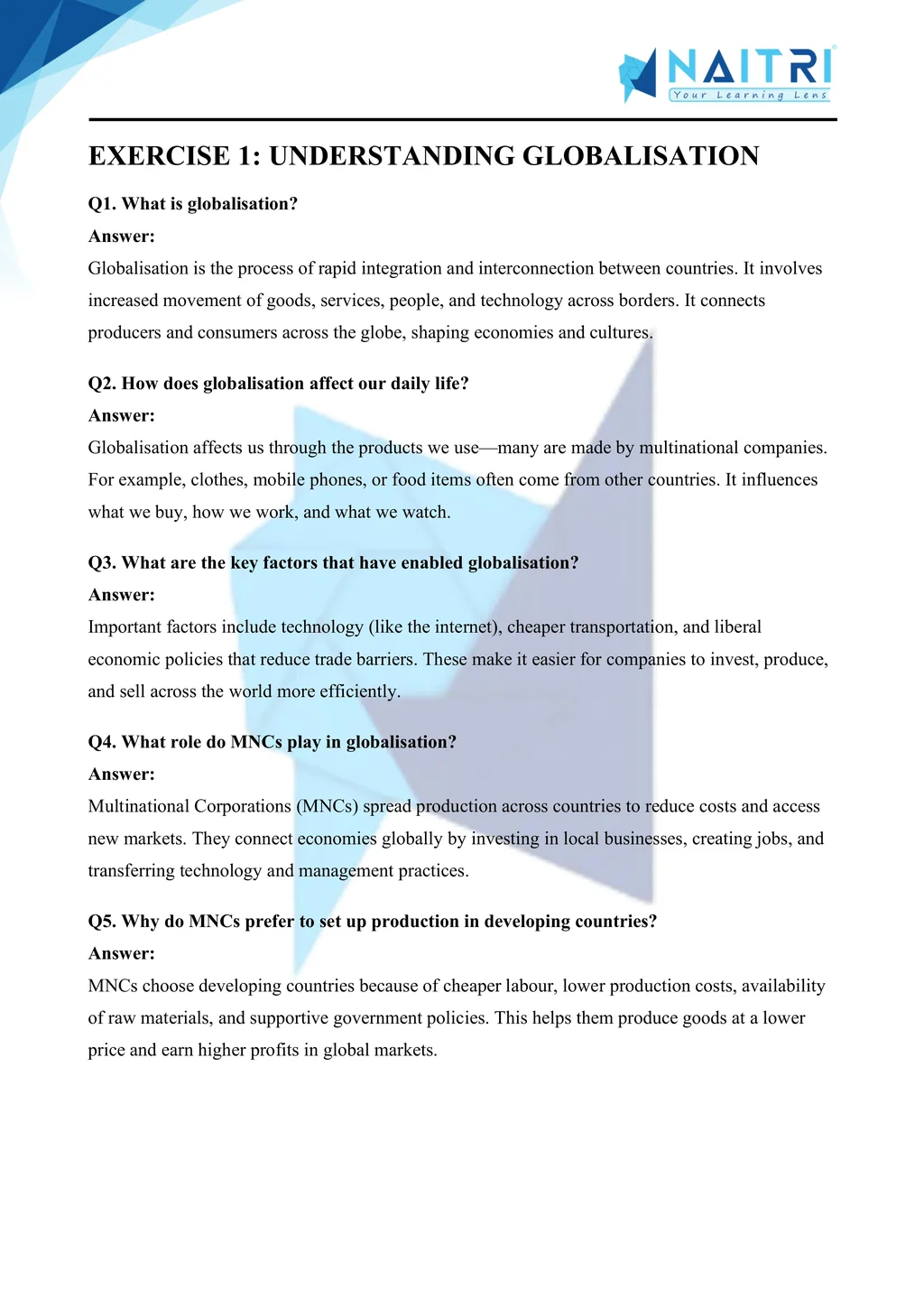
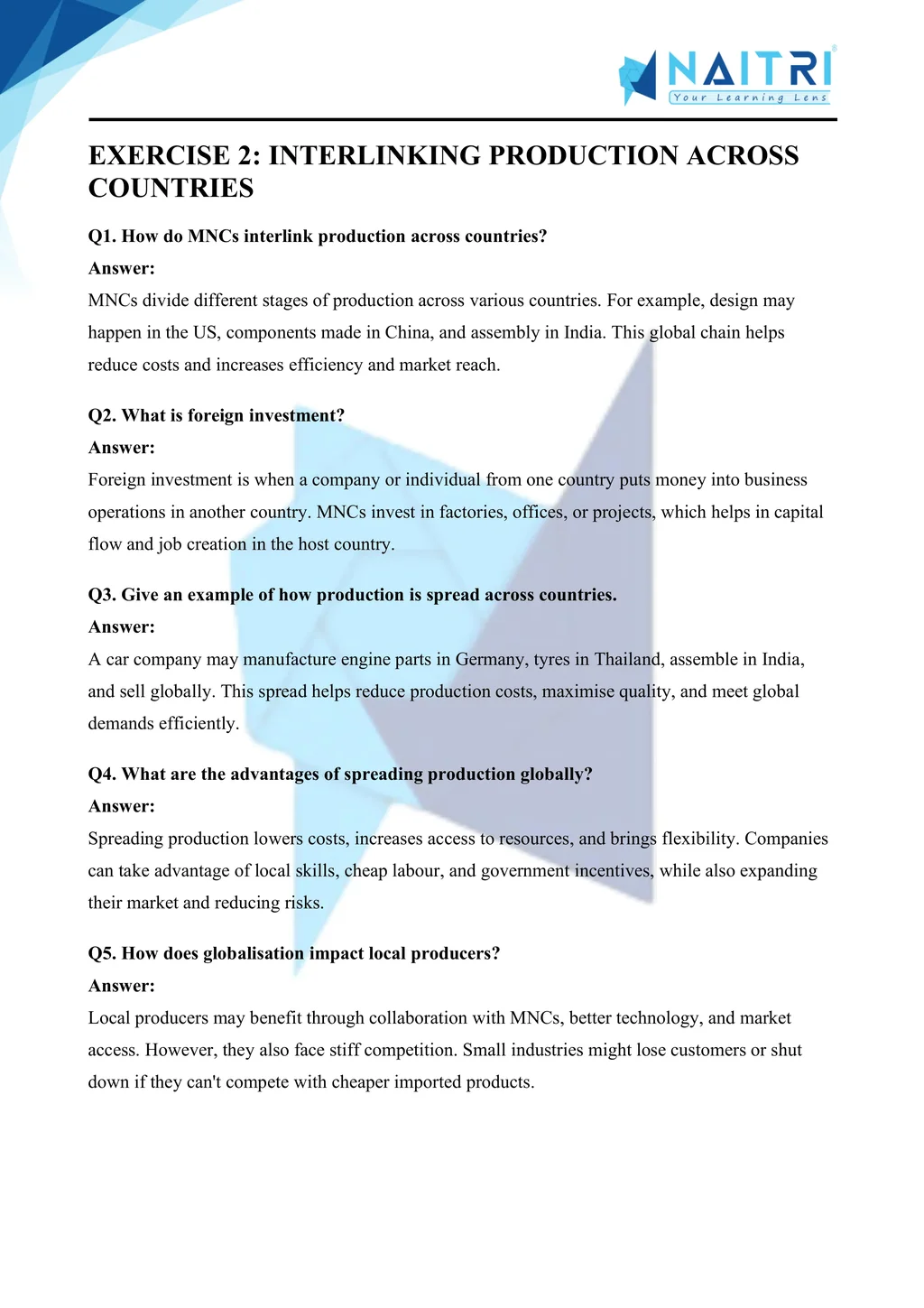
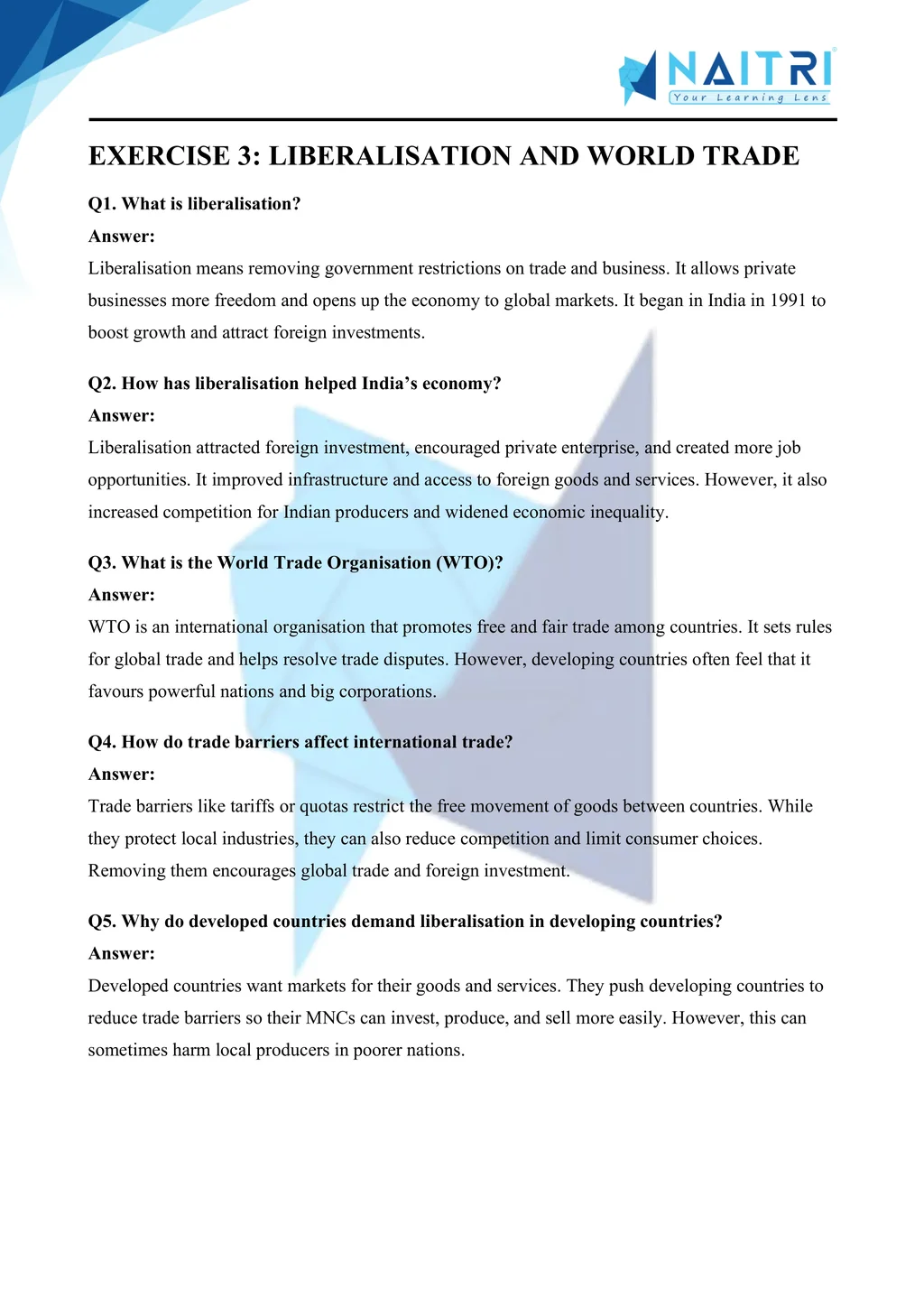
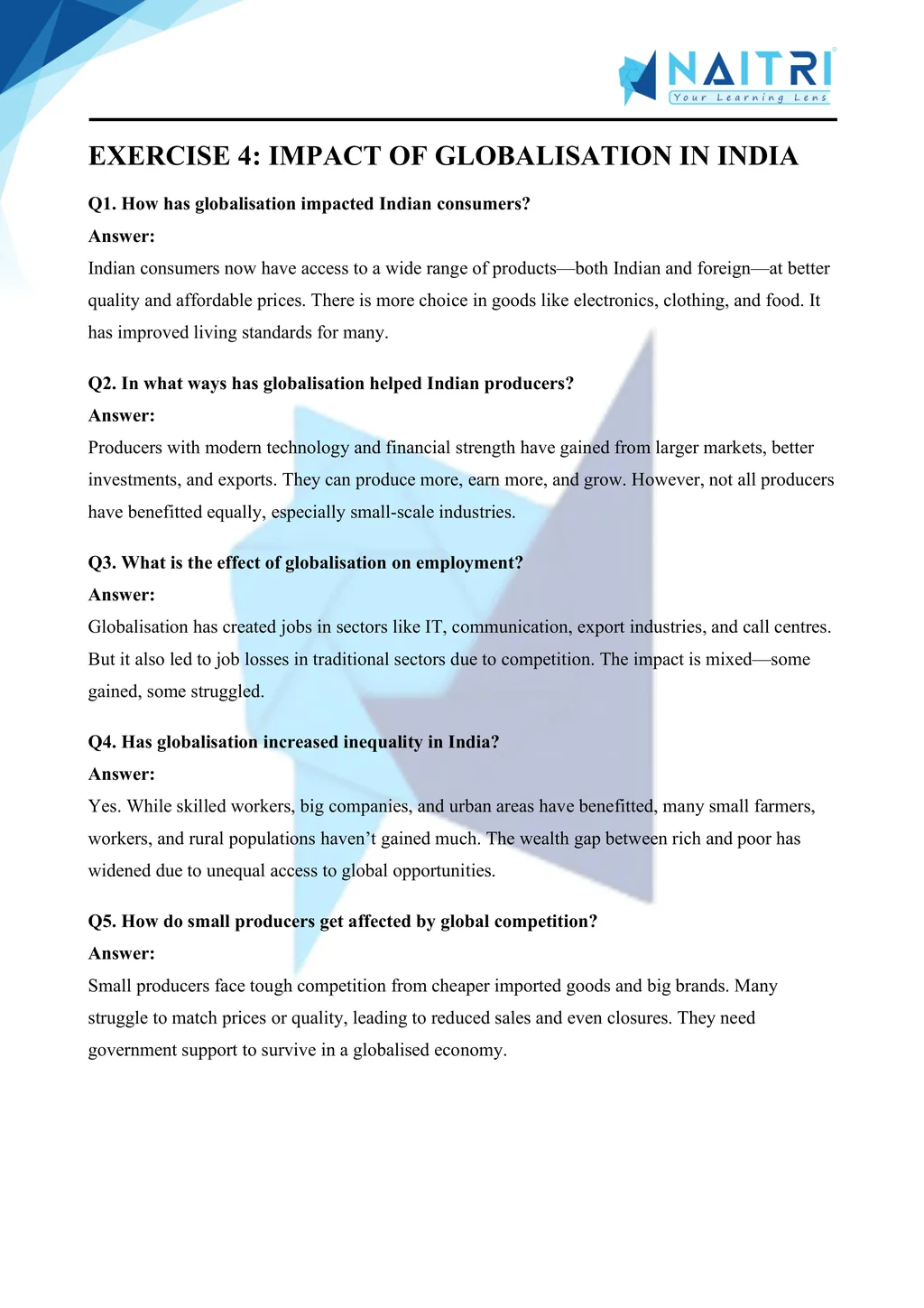
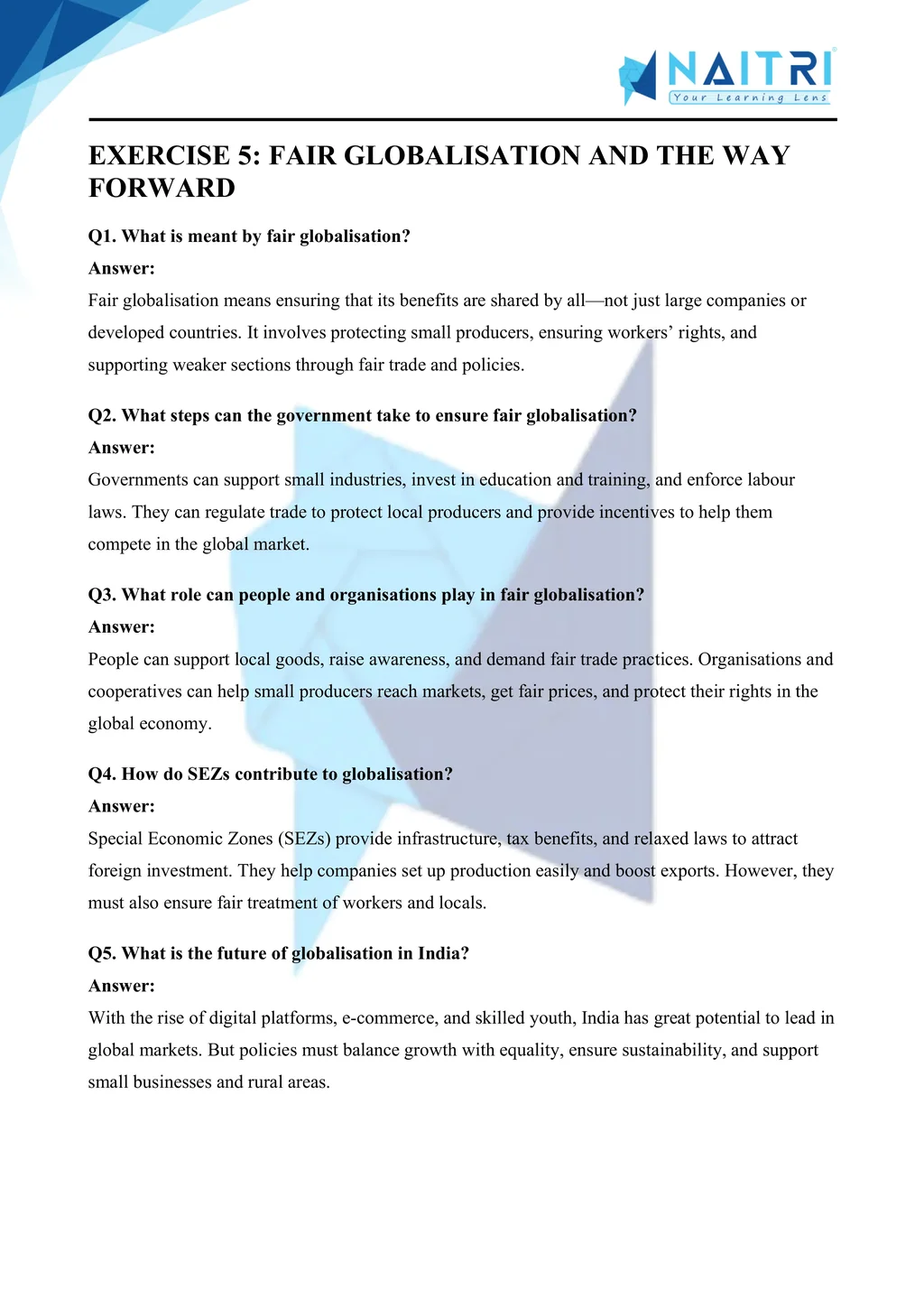
Experience Economics Like Never Before – With AR!
Understanding Globalisation and the Indian Economy is now more exciting and immersive! With the NAITRI App, you can explore complex economics concepts through Augmented Reality (AR). See trade expand, companies connect, and the global market impact local lives — right in front of you. Our AR-powered lessons make learning interactive, 3D, and fun, helping you retain concepts better and enjoy every topic.



Visualize . Interact . Understand . The future of learning is here
Globalisation and the Indian Economy – Important Questions with Answers
What is globalisation?
Answer: Globalisation is the process of increasing economic, social, and cultural connections between countries through trade, investment, technology, and the movement of goods and people.What are the factors that have enabled globalisation?
Answer: Key factors include liberalisation of trade policies, advancements in technology and transport, communication like the internet, and the spread of multinational companies (MNCs).What is a multinational corporation (MNC)?
Answer: An MNC is a company that owns or controls production in more than one country, such as Coca-Cola, Nestlé, or Samsung.How do MNCs operate in other countries?
Answer: MNCs set up factories or offices in other countries to reduce costs, use local labour, and sell their products in new markets.What is foreign investment?
Answer: It is the investment made by foreign companies or individuals in businesses, infrastructure, or industries of another country to earn profit.What is liberalisation?
Answer: Liberalisation refers to the removal of government restrictions on trade and industries, allowing free flow of goods, services, and capital.How has technology contributed to globalisation?
Answer: Improved transport and communication, like ships, internet, and mobile networks, have made it easier to exchange information and move goods globally.How do MNCs benefit local companies?
Answer: MNCs help local companies by providing capital, technology, training, and opportunities to be part of the global supply chain.What are global supply chains?
Answer: They are international production networks where different stages of making a product are carried out in different countries for efficiency.How has globalisation affected Indian consumers?
Answer: It has increased the availability of variety, quality goods at lower prices, especially in areas like food, fashion, electronics, and automobiles.What are the disadvantages of globalisation for producers?
Answer: Small producers face competition from big foreign companies and may suffer loss of business, reduced income, or even closure.Give examples of industries affected by globalisation.
Answer: Indian textile, toy, and handicraft industries have been affected as they cannot match the scale, speed, or cost of global players.What are trade barriers?
Answer: Trade barriers are restrictions imposed by the government, like taxes or quotas, to protect domestic industries or regulate foreign trade.Why did India remove trade barriers in 1991?
Answer: India removed barriers to integrate with the global economy, attract foreign investment, and improve economic growth after facing a financial crisis.What are the effects of foreign trade?
Answer: Foreign trade allows competition, better choices, and wider markets, but can also affect local industries if they fail to compete.What are the positive effects of globalisation in India?
Answer: Globalisation has created jobs, raised incomes, increased exports, improved access to technology, and brought better goods and services to people.What are the negative effects of globalisation in India?
Answer: It has led to job insecurity, poor working conditions, and the decline of small-scale industries due to foreign competition.What steps has the government taken to protect local producers?
Answer: It has promoted Make in India, offered subsidies, training, better infrastructure, and imposed certain trade restrictions to support domestic industries.How does WTO support globalisation?
Answer: The World Trade Organization (WTO) encourages free trade by helping countries resolve disputes and reduce trade barriers across the world.What is the criticism of WTO by developing countries?
Answer: Developing countries feel WTO favours rich nations, as they pressure others to open markets but protect their own industries.How has globalisation impacted employment in India?
Answer: It has created jobs in IT, BPO, and export industries, but many workers are in unorganized sectorswith low wages and no benefits.What is outsourcing?
Answer: Outsourcing is when companies give work to external firms, often in other countries, to reduce costs — for example, Indian call centres.What is SEZ (Special Economic Zone)?
Answer: SEZs are areas where businesses enjoy tax benefits, fewer regulations, and better infrastructure to attract foreign and domestic investment.How can India benefit more from globalisation?
Answer: By investing in education, infrastructure, innovation, and improving ease of doing business, India can become more competitive and inclusive.Summarise globalisation in the Indian context.
Answer: Globalisation has brought growth and choices, but also challenges. With smart policies, India can harness its benefits while protecting its local economy.
Globalisation and the Indian Economy explores how increased global integration impacts production, trade, and employment. The chapter discusses the role of multinational corporations (MNCs), liberalisation policies, and the advantages and disadvantages of globalisation. Through case studies and real-life examples, students examine how Indian producers, workers, and consumers are affected by global connections.
Related Chapters You May Like
Download Naitri App
Easy, Visual Learning — Right on Your Phone
Learn with Augmented Reality! The Naitri app makes CBSE and MP Board concepts interactive and fun — even in low-resource settings. Watch lessons, complete homework, take tests, and track progress — all in one place. Anytime. Anywhere.
Available on








